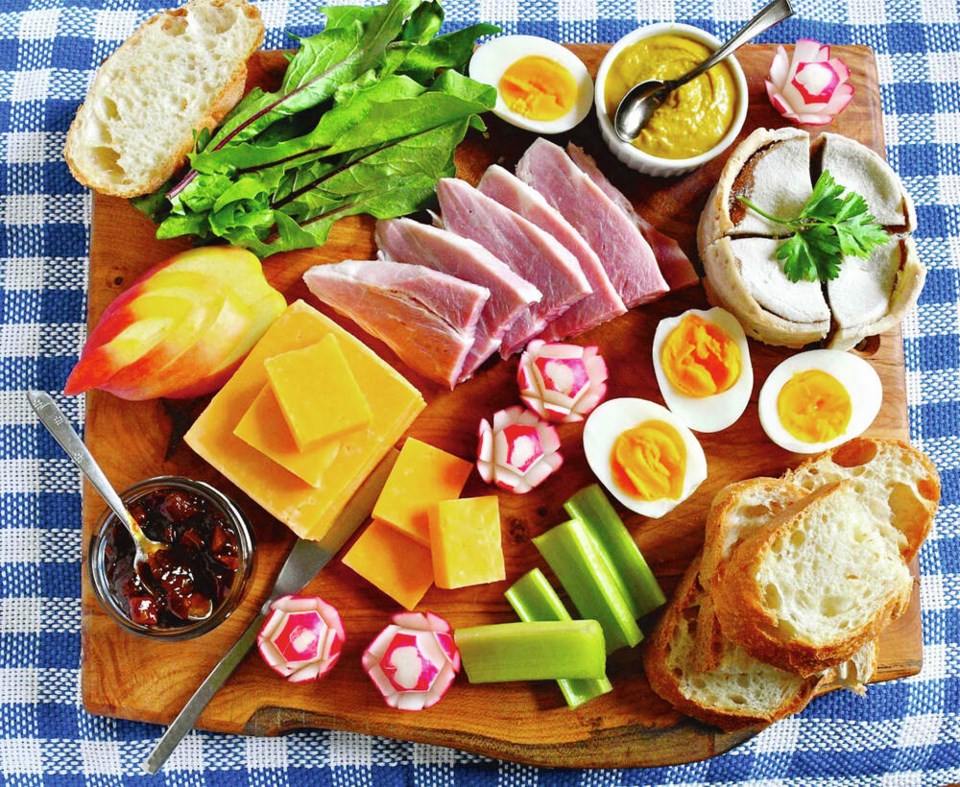If you’re having ham for Easter and anticipate leftovers, one inviting way to use them up is to make a ploughman’s lunch.
A ploughman’s lunch, if you don’t already know, is a British-style cold meal that, when first enjoyed, consisted of cheese, bread and accompaniments, such as some form of pickle.
The term “ploughman’s lunch” first appeared in print in the early 19th century and does sounds quaint and old. And British farm workers in days of yore did take cheese and bread to eat in the field on their breaks. But the mainstream use of the term “ploughman’s lunch” is relatively new and making it so well known in the United Kingdom and elsewhere was actually a very successful bit of marketing.
The story goes that after Second World War food rationing ended in England, authorities in that country sought ways to promote local foods that citizens could now enjoy without restriction.
According to the , the meal known as a “ploughman’s lunch” in its modern context was likely created in the 1950s. Its popularity grew in the 1960s, when England’s Milk Marketing Board featured ploughman’s lunch in advertising campaigns to boost national cheese sales.
Pubs were places those ploughman’s lunches were promoted and served and the meal soon became a win, win, win, win for four groups and still is. The winners were the folks making the cheese, the people selling it, the pub owners, whose staff could easily whip up this cold meal, and their patrons, who enjoyed eating this filling, nostalgic sounding combination that went very well with beer or cider.
As time moved along, depending on the establishment, meat, such as ham, vegetables and a range of other items began to be included in a ploughman’s lunch. When making it at home, you don’t need a recipe. You just have to decide what other items you want to serve with the cheese, ham and bread and how much of them you’ll need; basing the later on how many people you are serving.
Below is a list of some of the items you could include in a ploughman’s lunch. There are others, so feel free to add something you think I missed. Once you’ve chosen what items you’ll use, set out a board or platter, arrange the items on it, pour some beverages, set the ploughman’s lunch on the dining table and enjoy.
Items for a Ploughman’s Lunch
• Cheese, such as aged Cheddar and/or other firm or semi-firm British-style cheese. And, if desired, a blue cheese, such as Stilton.
• Meat, such as sliced ham. And, if desired, an item made with meat, such as cold pork pie, sausage roll or coarse pate.
• Bread, something sturdy that will hold the cheese and meat, such as crusty white bread, chunks of baguette or a seedy artisan loaf. And, of course, a dish of soft butter for spreading on the bread.
• Eggs, such as halved hard- or medium-boiled eggs, or devilled eggs. Or, as an additional meat item, sausage-encased Scotch-style eggs.
• Pickles and condiments, such as Branston pickle, tomato or other chutney, English-style mustard, pickled onions, mustard pickles and/or gherkins.
• Vegetables and fruit, such as crisp slices of apple, radishes, celery sticks, cherry tomatoes and/or salad greens, such as watercress, arugula or dandelion greens.
Eric Akis is the author of eight cookbooks. His columns appear in the Life section Wednesday and Sunday.



